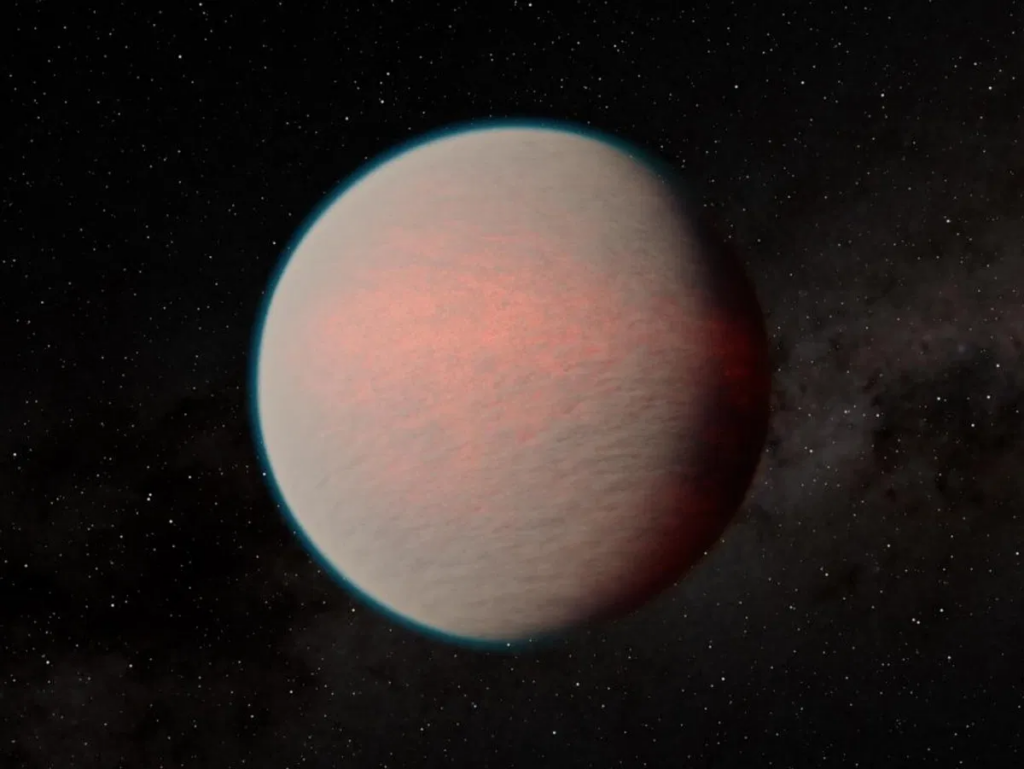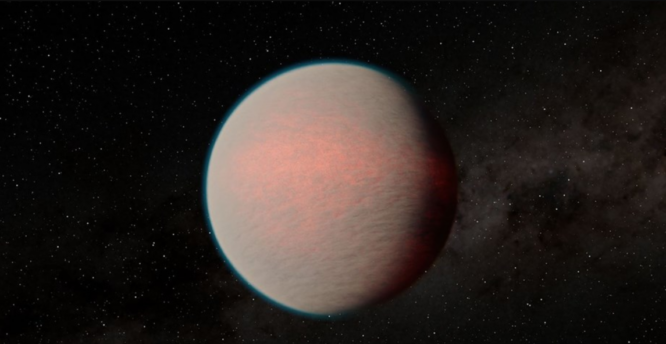The James Webb Space Telescope measured GJ 1214 b’s heat. Deep space telescopes can’t characterize the exoplanet’s atmosphere because it’s 40 lightyears away and cloaked in haze. Webb’s infrared eyes can see through clouds. Webb found water vapour in the atmosphere of an exoplanet too hot for life.
One side faces the host star and the other faces darkness. The planet’s thick atmosphere transfers daytime heat to nighttime.
Water and hydrogen lines overlap, making the findings unclear. At least the atmosphere contains elements heavier than hydrogen, such as water, methane, or a combination of the two. Astronomers found another surprise. Instead of black, sooty clouds that absorbed light, GJ 1214 b had brilliant clouds.

Nature reported the findings. “I’ve been on a quest to understand GJ 1214b for more than a decade,” explains lead author Eliza Kempton. This Nature paper’s data showed the planet’s light disappearing when it moved behind its host star. That has never been observed for this planet or any other planet of its class, thus JWST is delivering on its promise.”
The mini-Neptune is too hot for life, yet its atmosphere has water vapour.
Astronomers can use three-dimensional models to match Webb’s exoplanet atmosphere findings. “These new data are extraordinary, and in conjunction with simulations they inform our understanding that GJ 1214 b likely has a metal-enhanced atmosphere,” adds research co-author Isaac Malsky. JWST revealed fresh segments of the planet’s orbit by tracking its brightness variations. GJ 1214 b appears to be a water planet.
“For almost a decade, the only thing we really knew about this planet was that the atmosphere was cloudy or hazy,” explains exoplanet researcher Rob Zellem.
Our study has incredibly intriguing implications for more deep climate interpretations—to look at the intricate physics happening inside our planet’s atmosphere.” The planet developed far from the red dwarf host star and drifted inwards, according to studies. On Earth, a year on GJ 1214 b lasts around two days.
Webb observed for 40 hours. Sub-Neptunes—planets larger than Earth but smaller than Neptune—intrigue astronomers. They circle 50% of Milky Way stars, making them the most frequent form of planet.

